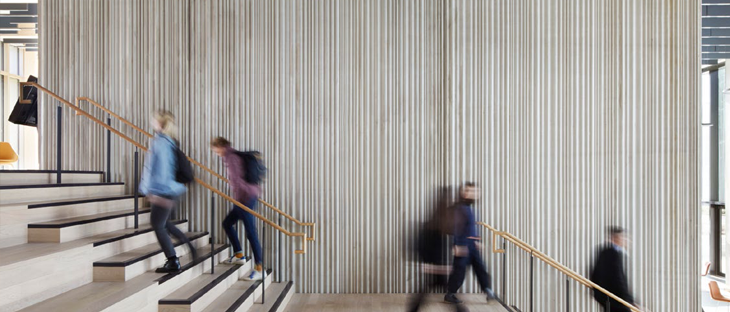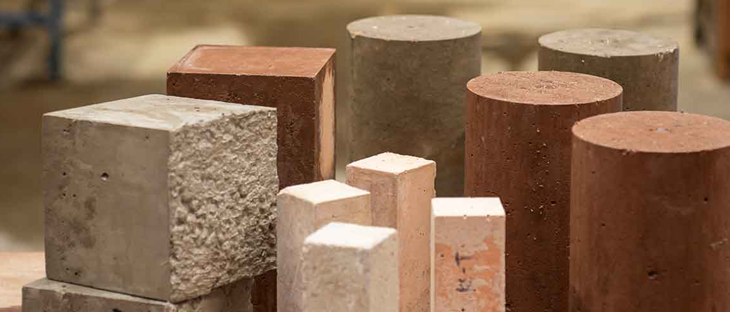Sustainability Series
Week 2: Lower carbon concrete technology
Week 2 of the Sustainability Series focuses on the many current, evolving and innovative ways to reduce the impact of concrete through its specification, as well as the design of reinforcement. Guidance is provided on the range of opportunities now available to achieve lower carbon concretes through concrete standards. We present some of the latest research and industry activity for further development of lower carbon concrete, particularly related to the use of supplementary cementitious materials (SCMs). We also draw attention to some of the wide range of innovation taking place in cement and concrete technology, expanding the potential opportunities for lower carbon concrete.
__________________________________________________________________
Webinar: The changing landscape of Supplementary Cementitious Materials (SCMs)
Supplementary cementitious materials (SCMs) are materials that may be used as part of the binder in concrete. SCMs can be lower in embodied carbon than Portland cement and are consequently an important part of the route towards net zero concrete. The availability, use and standards related to SCMs is evolving and this will be the focus of this week’s live event.
The webinar is split into two sessions – the first focuses on greater and alternative uses of limestone and the second covers calcined clays, recycled fines and stock-piled fly ash.

Webinar: The changing landscape of Supplementary Cementitious Materials (SCMs), Part 1: Greater and alternative uses of limestone
Catch up on-demand: The event was recorded and is available as an on-demand resource. The webinar is available here.
__________________________________________________________________

Webinar: The changing landscape of Supplementary Cementitious Materials (SCMs), Part 2: Expanding the range: calcined clays, recycled fines and stock-piled fly ash
Catch up on-demand: The event was recorded and is available as an on-demand resource. The webinar is available here.
- An introduction to SCMs and some alternative binder technologies can be downloaded here.
__________________________________________________________________
Spotlight on: Specifying lower carbon concrete in BS 8500
The key UK standard for concrete, BS 8500, was updated in 2023. This revision increases the range of lower carbon concretes that can be specified and includes the use of multi-component cements.
- ‘Specifying durable, lower carbon concrete’ is an on-demand webinar which explains ways of specifying durable, lower carbon concrete in accordance with BS 8500:2023. This includes the relationship between concrete strength and embodied carbon of concrete, as well as clarifying the benefits of specifying 56-day strength. You can view the recording here.
- For more detailed information on using BS 8500, a ‘How to’ guide is available to download here.
- Guidance on using 56-day concrete strengths can be downloaded here.
Spotlight on: Calcined clay
Calcined clay is a supplementary cementitious material (SCM) that is generating much interest. In addition to being covered in part two of this week’s webinar, the following new resources are intended to help specifiers considering specifying calcined clays.
- New web-based guidance on calcined clays – providing an introduction and overview, and their current inclusion in standards for concrete manufacture.
- Read about the Eureka Project, a recent research project identifying the suitability of local supplies of clay for use in concrete manufacture.
- The Re-C3 project is aa recently completed research project which demonstrated the potential of reclaimed clays and finely ground bricks as SCMs. These lower value clays are currently discarded in UK quarry and brick production sites and could be used in cement and concrete. The project was a collaboration between MPA, academia and industry. The full report is available here.
Spotlight on: Reinforcement
Steel reinforcement contributes around a quarter of a concrete slab’s embodied carbon – and this is likely to increase as the embodied carbon of concrete continues to fall. However, there are a range of opportunities for designers to reduce this environmental impact – both in the design of typical steel reinforcement and the specification of alternative reinforcing materials.
With typical steel reinforcement, adopting modified material partial factors, removing conservative assumptions in laps and anchorages and avoiding over-rationalisation of reinforcement layouts can lead to significant reduction in reinforcement quantities. The second generation of Eurocode 2 will also enable wider use of alternative reinforcement types, such as steel fibres and fibre reinforced polymer, with potential savings in element thicknesses and cover for durability.
- More information is available in the ‘How to cut carbon’ technical article in CQ Winter 2022.
- Further information on modifying material partial factors is available in the publication ‘Reducing carbon and cost of reinforcement’ which you can download here.
Spotlight on: Innovation
Research and development is yielding many exciting new concrete products and source materials that have the potential to significantly alter or enhance the properties of concrete and expand its potential uses. To find out more about innovation the following resources are available:
- Concrete Futures - a lecture and magazine series which is dedicated to exploring the innovation, research and new developments in concrete. The latest publication can be downloaded here.
- Fresh Concrete – a series of online presentations produced in partnership between The Concrete Centre and The Building Centre bringing fresh approaches and fresh thinking for concrete. Recordings from the 2022, 2023 and 2024 series are available to watch on demand.
- Concrete Quarterly innovation – a regular feature of the magazine exploring research and development in cement and concrete technology. All articles are available to read here.